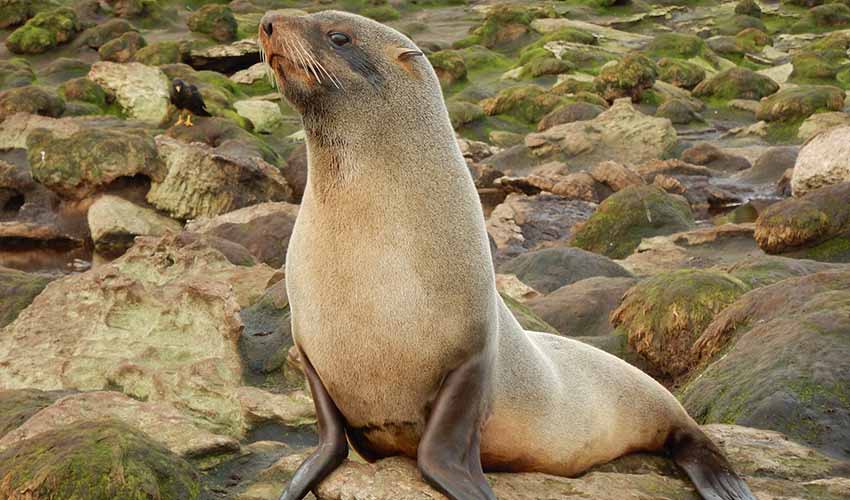A fascinating marine mammal that lives along the coasts of South America, especially in Uruguay, Peru, Chile, and Argentina. Unlike true seals, fur seals have external ears and can rotate their back flippers forward, allowing them to “walk” on land with surprising agility. Their coat has two layers: a dense underfur that keeps them warm in cold waters, and longer guard hairs that give them a sleek, shiny appearance. This adaptation makes them especially suited to the chilly waters of the South Atlantic and Pacific Oceans.
What sets the South American fur seal apart from other fur seals is its preference for rocky shorelines and steep cliffs. While many seal species haul out on beaches, these seals thrive on rugged, wave-battered coasts where they can find protection from predators and disturbances. During the breeding season, males establish territories and form harems, where they guard and mate with several females—a behavior that highlights the strong social dynamics within their colonies.
Another cool feature of these seals is their excellent diving ability. They can dive more than 100 meters (328 feet) deep and stay underwater for several minutes while hunting fish, squid, and other marine prey. Their large, dark eyes are adapted to low light, giving them an edge when foraging in dim underwater environments. Interestingly, South American fur seals are also known to have a rather playful side, often seen surfing waves or engaging in social interactions with one another. Pups, in particular, are very curious and often play in tide pools near the colony.
Some colonies of South American fur seals have become famous tourist attractions, such as those on Uruguay’s Isla de Lobos. Visitors can observe thousands of seals basking, barking, and swimming, making it one of the largest fur seal colonies in the world.
Distribution
 Argentina
Argentina Brazil
Brazil Chile
Chile Falkland Islands
Falkland Islands Peru
Peru Uruguay
UruguayRecent Update
Anything we've missed?
Help us improve this page by suggesting edits. Glory never dies!
Suggest an editGet to know me
Terrestrial / Aquatic
Altricial / Precocial
Polygamous / Monogamous
Dimorphic (size) / Monomorphic
Active: Diurnal / Nocturnal
Social behavior: Solitary / Pack / Herd
Diet: Carnivore / Herbivore / Omnivore / Piscivorous / Insectivore
Migratory: Yes / No
Domesticated: Yes / No
Dangerous: Yes / No




